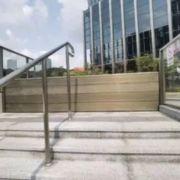How CAM Software Optimizes CNC Machining Processes
In the world of modern manufacturing, precision, efficiency, and speed are critical. These expectations are pushing CNC machining to new heights, and one of the most powerful drivers behind this evolution is CAM software—short for Computer-Aided Manufacturing.
Whether you're machining metals, plastics, or advanced composites, CAM software plays a vital role in streamlining production, improving accuracy, and reducing waste. In this article, we’ll explore how CAM software optimizes CNC machining processes and how it integrates with other manufacturing technologies like Selective Laser Sintering for hybrid workflows.
🔧 What Is CAM Software?
CAM software is a digital tool that converts CAD (Computer-Aided Design) models into machine instructions, often in the form of G-code. These instructions guide CNC machines in performing tasks like:
-
Milling
-
Turning
-
Drilling
-
Grinding
-
Multi-axis operations
Unlike manual programming, CAM software automates toolpath generation, simulation, and process planning—making CNC workflows faster and more consistent.
🚀 Key Benefits of CAM in CNC Machining
1. Improved Accuracy and Precision
CAM systems eliminate guesswork by calculating exact toolpaths and optimal cutting parameters. This reduces the risk of human error and ensures repeatable, high-tolerance parts—even for complex geometries.
2. Enhanced Efficiency and Speed
By automating code generation, tool selection, and path optimization, CAM software reduces setup time and boosts production speed. Users can simulate machining cycles before execution, eliminating trial-and-error on the shop floor.
3. Toolpath Optimization
Advanced CAM systems intelligently generate toolpaths that minimize tool wear, reduce machining time, and optimize material removal. These optimized strategies help conserve resources and extend machine life.
4. Multi-Axis Machining Support
Modern CAM platforms can handle complex 3-, 4-, and even 5-axis machining, allowing manufacturers to produce intricate parts in fewer setups. This is crucial in industries like aerospace and medical, where geometries are often complex.
5. Seamless Integration with CAD
Most CAM software integrates directly with CAD platforms, enabling a smooth transition from design to manufacturing. Design updates can instantly sync with machining plans, improving workflow and reducing downtime.
🛠️ Real-World Applications of CAM-Enhanced CNC Machining
CAM software is at the heart of industries such as:
-
Aerospace – Precision engine components, structural airframe parts
-
Automotive – Transmission parts, custom gear systems
-
Medical Devices – Surgical instruments, implants
-
Consumer Electronics – Enclosures, heat sinks, precision mounts
In each of these sectors, the ability to rapidly turn designs into high-performance components is made possible through CAM technology.
⚙️ How CAM Enables Advanced Manufacturing Techniques
As industries adopt more complex manufacturing processes, CAM software is evolving to support them. Hybrid manufacturing, which combines subtractive (CNC machining) and additive processes (like 3D printing), is gaining popularity.
One such additive method is Selective Laser Sintering (SLS)—a 3D printing technology that builds parts by fusing powdered materials with a laser.
CAM systems are increasingly being developed to interface with additive technologies like Selective Laser Sintering, enabling engineers to combine the precision of CNC machining with the design freedom of 3D printing.
This integration creates hybrid workflows where a near-net-shape part is 3D printed and then finished with high-precision CNC machining. The result? Reduced material waste, shorter production cycles, and better design flexibility.
🧠 Features to Look for in CAM Software
If you're investing in a CAM platform, look for these key capabilities:
-
✅ Toolpath Simulation: Visualizes machining operations in 3D to detect errors
-
✅ Material Library: Helps in selecting optimal feeds and speeds
-
✅ Adaptive Machining Strategies: Adjusts cutting paths based on geometry
-
✅ Machine-Specific Post-Processors: Converts toolpaths into G-code compatible with specific CNC machines
-
✅ Additive/Subtractive Integration: Supports workflows involving both CNC and 3D printing, such as Selective Laser Sintering
📊 CAM Optimization = Cost Savings
A properly implemented CAM system can lead to substantial cost savings:
| Metric | Without CAM | With CAM |
|---|---|---|
| Setup Time | High | Reduced |
| Tool Wear | Increased | Optimized |
| Scrap Rate | Frequent | Minimal |
| Productivity | Limited | Enhanced |
| Programming Time | Manual | Automated |
By reducing human error and automating tedious tasks, CAM ensures that CNC machines run faster, more accurately, and more profitably.
🌐 The Future of CAM in CNC
As artificial intelligence and machine learning become more prevalent, the next generation of CAM software will offer:
-
AI-driven toolpath suggestions
-
Predictive maintenance for CNC machines
-
Real-time adaptive cutting strategies
-
Cloud-based collaboration for distributed teams
In combination with advancements like Selective Laser Sintering, this signals a future where machining isn’t just subtractive—it’s smart, adaptive, and hybrid.
🔍 Final Thoughts
CAM software has transformed the CNC machining industry by making it faster, smarter, and more efficient. From optimizing toolpaths to integrating with cutting-edge technologies like Selective Laser Sintering, CAM continues to push the boundaries of what's possible in manufacturing.
For companies looking to enhance their CNC capabilities, investing in the right CAM software—and partnering with experienced providers—is key to long-term success.
📌 Ready to Optimize Your CNC Machining Workflow?
Explore how our expert machining team can streamline your next project with CAM-driven precision and hybrid production strategies.
👉 Learn more about Selective Laser Sintering and CNC integration
Whether it’s prototyping, hybrid manufacturing, or full-scale production, we deliver unmatched quality, speed, and innovation.







